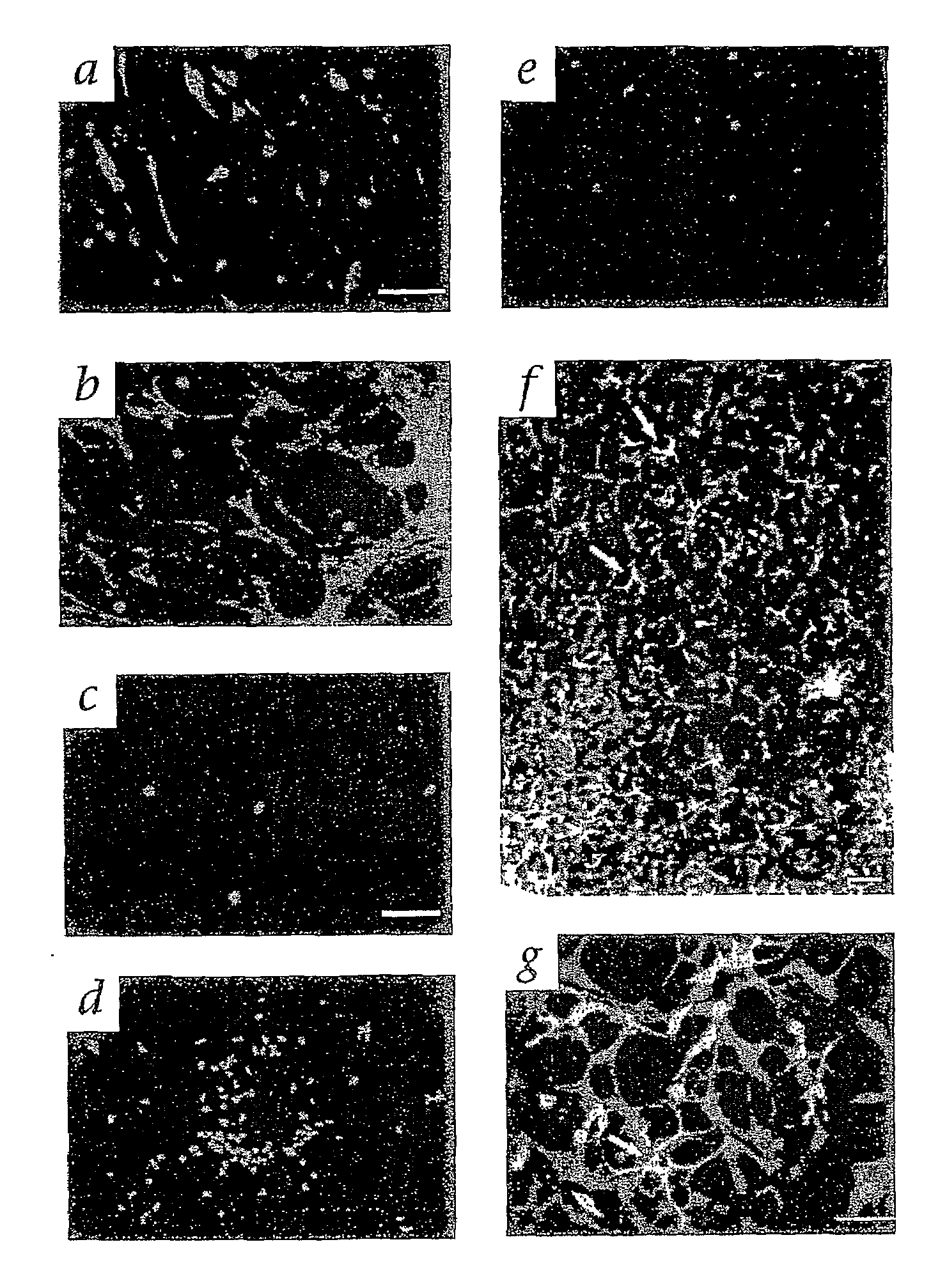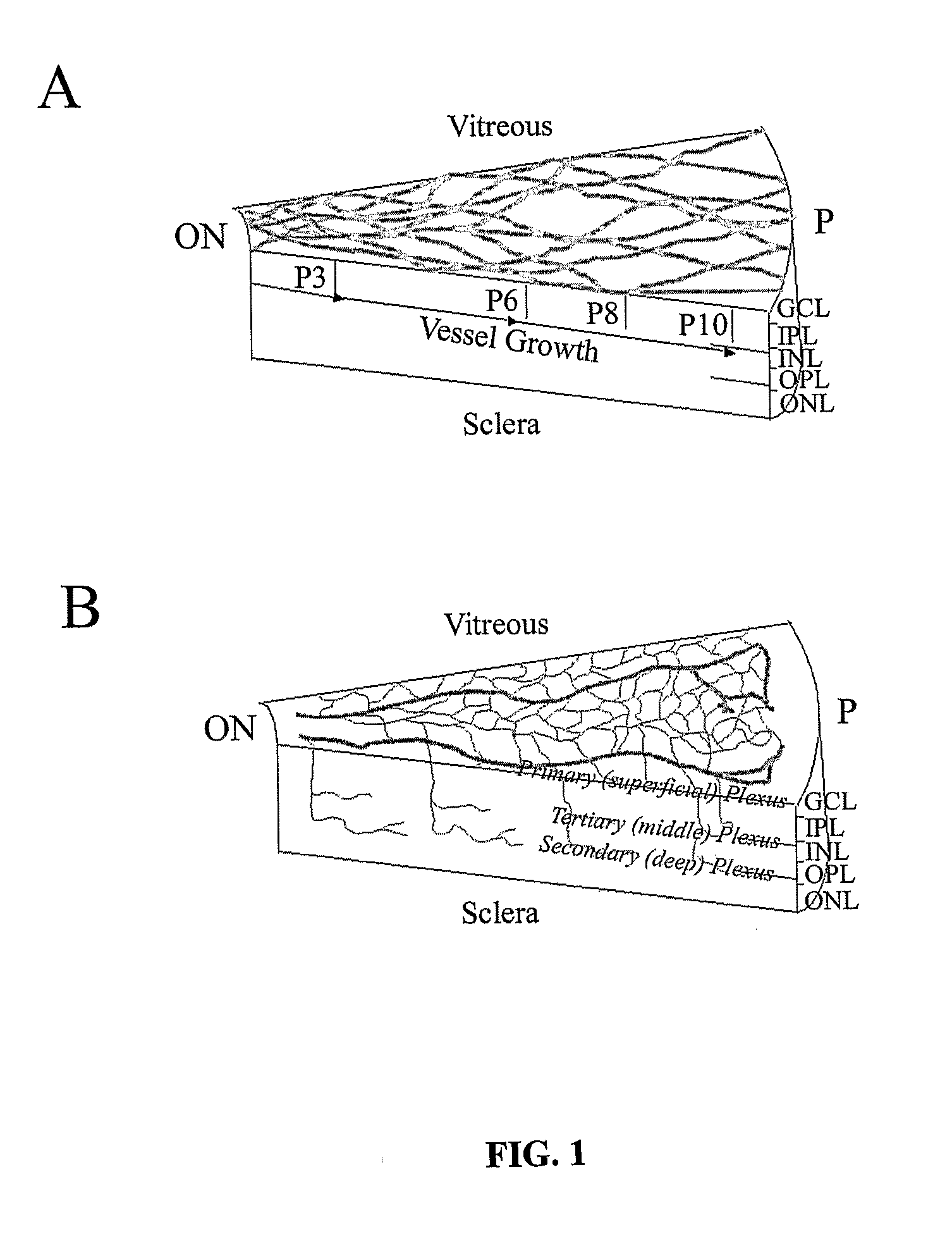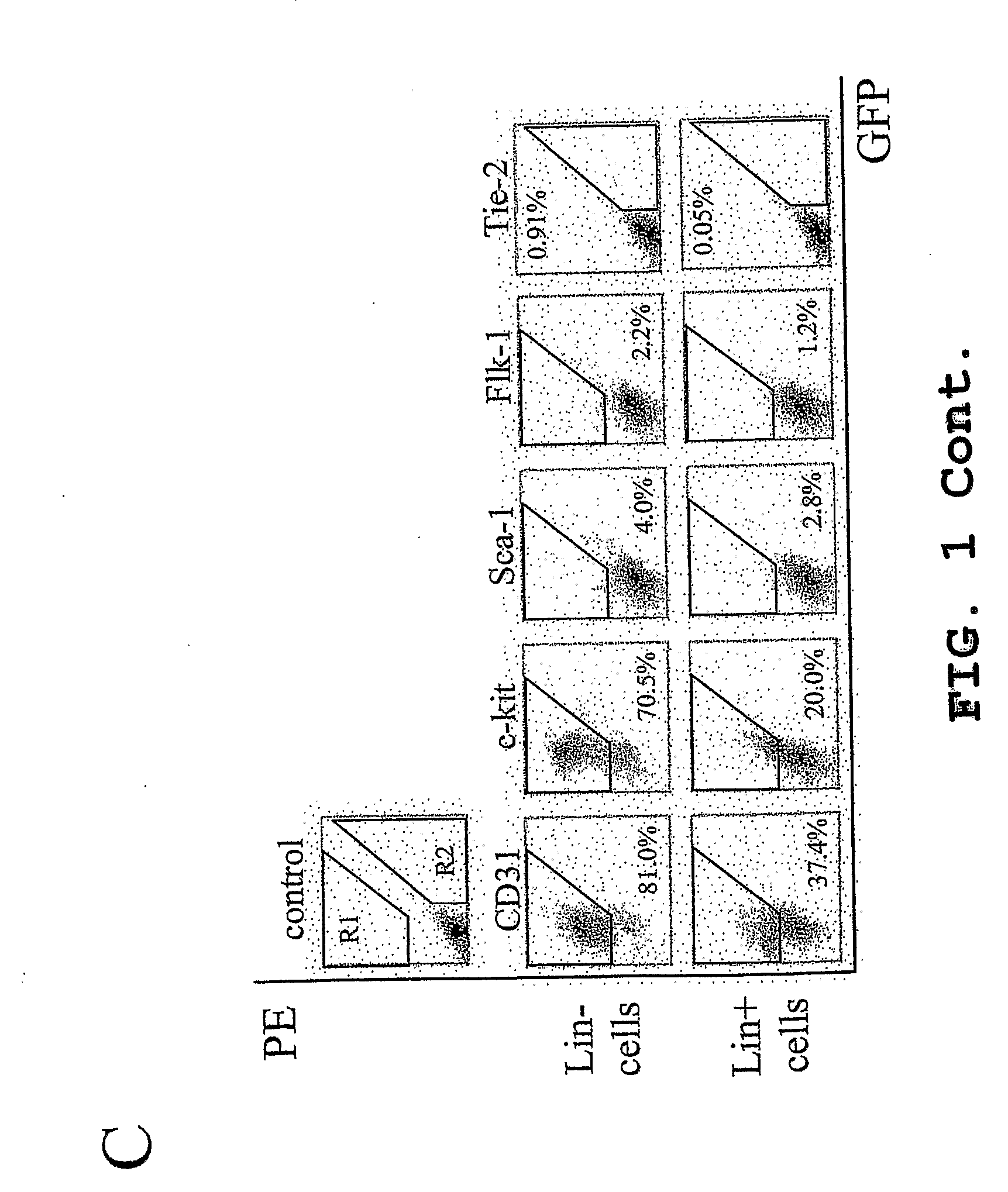Method for the Treatment of Retinopathy of Prematurity and Related Retinopathic Diseases
a retinopathy and prematurity technology, applied in the field of retinopathy treatment methods, can solve the problems of ineffective prevention of visual loss, significant loss of visual function, and no treatment is currently available to specifically treat ocular vascular diseas
- Summary
- Abstract
- Description
- Claims
- Application Information
AI Technical Summary
Benefits of technology
Problems solved by technology
Method used
Image
Examples
example 1
Cell Isolation and Enrichment; Preparation of Murine Lin− HSC Populations A and B
[0128]General Procedure. All in vivo evaluations were performed in accordance with the NIH Guide for the Care and Use of Laboratory Animals, and all evaluation procedures were approved by The Scripps Research Institute (TSRI, La Jolla, Calif.) Animal Care and Use Committee. Bone marrow cells were extracted from B6.129S7-Gtrosa26, Tie-2GFP, ACTbEGFP, FVB / NJ (rd / rd mice) or Balb / cBYJ adult mice (The Jackson Laboratory, ME).
[0129]Monocytes were then separated by density gradient separation using HISTOPAQUE® polysucrose gradient (Sigma, St. Louis, Mo.) and labeled with biotin conjugated lineage panel antibodies (CD45, CD3, Ly-6G, CD11, TER-119, Pharmingen, San Diego, Calif.) for Lin− selection in mice. Lineage positive (Lin+) cells were separated and removed from Lin− HSC using a magnetic separation device (AUTOMACS™ sorter, Miltenyi Biotech, Auburn, Calif.). The resulting Lin− HSC population, containing en...
example 2
Intravitreal Administration of Cells in a Murine Model
[0133]An eyelid fissure was created in a mouse eyelid with a fine blade to expose the P2 to P6 eyeball. Lineage negative HSC Population A of the present invention (approximately 105 cells in about 0.5 μl to about 1 μl of cell culture medium) was then injected intravitreally using a 33-gauge (Hamilton, Reno, Nev.) needled-syringe.
example 3
EPC Transfection
[0134]Murine Lin− HSC (Population A) were transfected with DNA (SEQ ID NO: 1, FIG. 7) encoding the T2 fragment of TrpRS (SEQ ID NO: 3) also enclosing a His6 tag using FuGENE™ 6 Transfection Reagent (Roche, Indianapolis, Ind.) according to manufacturer's protocol. Lin− HSC cells (about 106 cell per ml) were suspended in Opti-MEM® medium (Invitrogen, Carlsbad, Calif.) containing stem cell factor (PeproTech, Rocky Hill, N.J.). DNA (about 1 μg) and FuGENE reagent (about 3 μl) mixture was then added, and the mixtures were incubated at about 37° C. for about 18 hours. After incubation, cells were washed and collected. The transfection rate of this system was approximately 17% as confirmed by FACS analysis. T2-TrpRS production was confirmed by western blotting. The amino acid sequence of His6-tagged T2-TrpRS is shown as SEQ ID NO: 2, FIG. 8.
PUM
 Login to View More
Login to View More Abstract
Description
Claims
Application Information
 Login to View More
Login to View More - R&D
- Intellectual Property
- Life Sciences
- Materials
- Tech Scout
- Unparalleled Data Quality
- Higher Quality Content
- 60% Fewer Hallucinations
Browse by: Latest US Patents, China's latest patents, Technical Efficacy Thesaurus, Application Domain, Technology Topic, Popular Technical Reports.
© 2025 PatSnap. All rights reserved.Legal|Privacy policy|Modern Slavery Act Transparency Statement|Sitemap|About US| Contact US: help@patsnap.com



